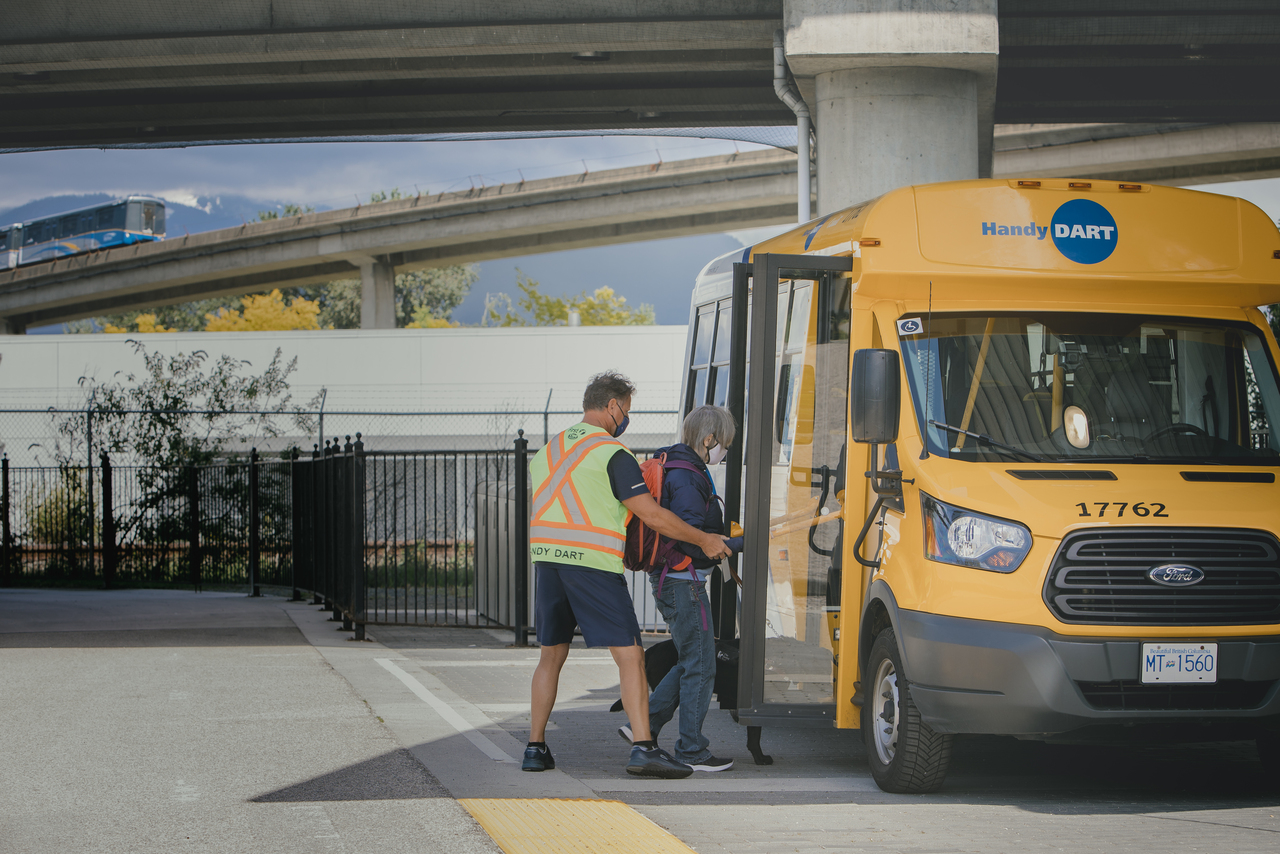Moving towards a more accessible TransLink
Moving towards a more accessible TransLink
May 28 to June 3 is National AccessAbility Week – a week to celebrate the valuable contributions of Canadians with disabilities, highlight our work to remove barriers to access, and reflect on ongoing efforts to become a better, more inclusive Canada.

At TransLink, we play a critical role in making our region more accessible, striving to make it easier for people of all ages and abilities to connect to the people and places that matter the most.
As part of National AccessAbility Week, Canada’s first Chief Accessibility Officer, Stephanie Cadieux, challenged us to reflect and share the progress we’re making towards a more accessible TransLink.
TransLink is working on many exciting initiatives to enhance accessibility and reduce barriers for customers.
Earlier this year, we started piloting a new accessibility tool — the first of its kind in Canada — that can help customers with sight loss better navigate the transit system independently using their smartphones. Using the NaviLens smartphone app, customers in three locations in New Westminster and Vancouver can receive audio and haptic cues to help find their bus stop and receive other updates.
On top of this, we’re almost done installing braille signage with raised tactile letters on every bus stop pole across the system. To make it easier to find bus stops, this will include tactile walking surface indicators at every bus stop on TransLink-owned property. Once complete, TransLink will be one of the first transit authorities in North America to provide this level of information across the bus network.
For those who are physically not able to tap fare media at SkyTrain stations and SeaBus terminals, our Universal Fare Gate Access Program provides an adaptive fare alternative. Eligible customers can receive a radio-frequency identification (RFID) enabled card to automatically open accessible fare gates when they move within close range.
I also want to highlight improvements to Service Alerts that we implemented last Fall. Through the service alerts system, customers can get transit information texted to them. From your feedback, this system has been improved to also provide information about elevators, escalators, and station entrances, so that you know about a mechanical issue before arriving at the station. This should make route planning a lot easier!
I think it’s also important to mention that accessibility isn’t just for our customers; inclusion begins from within. Our Equity, Diversity, and Inclusion team have been working hard to ensure that we are fully embracing our core value of inclusion. This includes championing Employee Resource Groups (ERG) like our new AccessAbility + Allies ERG, having all our office locations certified by the Rick Hansen Foundation Accessibility Certification program, and working towards a fulsome Accessibility Strategy that guide our efforts. We will continue working to make TransLink a more accessible and inclusive place to work and build a workforce that reflects the communities we serve.
Considering customers’ first-hand experiences are vital to our operations, and we are continuously improving our system through user feedback.
Our Access Transit User Advisory Committee and HandyDART User’s Advisory Committee are integral to the success of all our accessibility initiatives. We work closely with these committees to get their advice and feedback on the planning and implementation of all our initiatives.
Additionally, feedback received by our Customer Information Agents is shared with teams internally to help ensure our services meet the needs of customers with disabilities.
We’ve made some great strides, but we still have work to do.
There’s more work to be done in order to achieve our vision of Access for Everyone that’s outlined in our 30-year transportation strategy, Transport 2050.
We’re committed to providing high-quality HandyDART service. In 2022, First Transit, that delivers HandyDART service, impressively accommodated 99.6 per cent of requested trips by customers. As part of Transport 2050: 10-Year Priorities, we plan to expand this service by 60 per cent over a ten-year period and explore 24-hour service to meet growing demand.
But we’re not waiting until the 10-Year Priorities are fully funded to make improvements to HandyDART service. We’re already improving the customer experience with service improvements like:
- Extending the reservation booking window to increase flexibility for our customers.
- Introducing age-based concession fares, reducing fares for 70 per cent of customers.
- Introducing HandyDART into the Compass program, making it easier to use all of our services with one card.
We’ve done some significant work over the past few years to make our system more accessible for all, but by no means are we done. We will continue to work to ensure we have a highly accessible, inclusive, and safe system that welcomes all members of our diverse communities to transit.
Kevin Quinn, TransLink CEO
Kevin Quinn is the Chief Executive Officer of TransLink, Metro Vancouver’s award-winning transportation authority. As CEO, Kevin Quinn oversees management, planning, financing, and delivery of a growing world-class transportation network that includes bus, SkyTrain, SeaBus, HandyDART, and West Coast Express transit services, along with five regional bridges, walking and cycling paths, and the Major Road Network.





